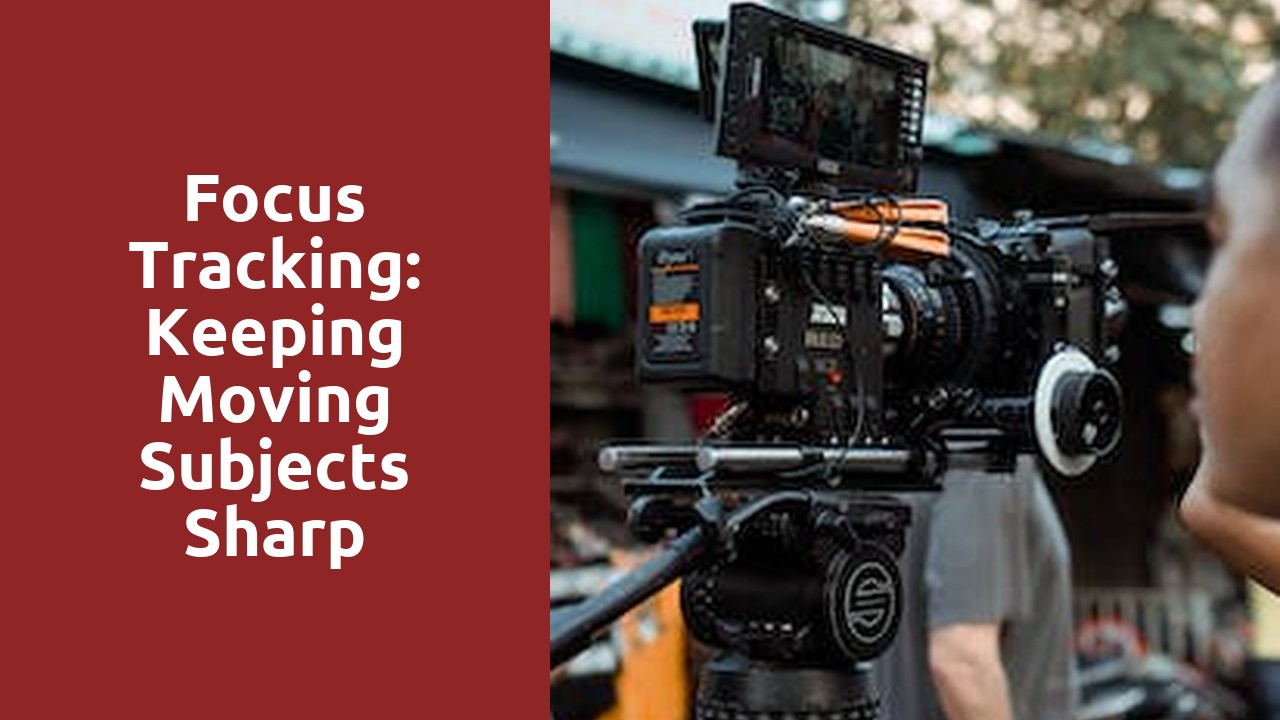
Focus Tracking: Keeping Moving Subjects Sharp
Understanding the Importance of Focus Tracking in Photography
When it comes to photography, one of the most vital elements to consider is focus tracking. This technique enables photographers to accurately capture a subject in motion, ensuring that it stays sharp and in focus throughout the entire image. Whether you're photographing a fast-paced sporting event or capturing the beauty of wildlife in action, focus tracking can make all the difference in the final outcome of your photographs.
One key aspect of focus tracking is the use of continuous autofocus mode. This setting allows the camera to continuously adjust the focus as the subject moves, ensuring that it remains sharp and clear. By utilizing this mode, photographers can capture those split-second moments with precision and clarity, resulting in visually striking images that truly capture the essence of the subject's movement. Additionally, focus tracking also allows photographers to have greater control over the depth of field, enhancing their creative possibilities and ensuring that the subject stands out against the background.
Exploring the Challenges of Capturing Moving Subjects
One of the most exciting and dynamic aspects of photography is capturing moving subjects. Whether it's fast-paced action sports, wildlife in motion, or even capturing the perfect candid moment of a running child, photographing moving subjects presents its own unique set of challenges. The key to success lies in mastering the art of timing and anticipation.
Photographing moving subjects requires a keen eye for detail and the ability to react quickly. The photographer must be ready to click the shutter at the precise moment when the subject is in the perfect position or when the desired action is happening. This requires a combination of technical skills, such as setting the right shutter speed and focus, as well as an understanding of the subject's behavior or movement patterns. The challenge lies in capturing that split-second moment that tells a story and elicits an emotional response from the viewer.
The Basics of Focus Tracking: What You Need to Know
Setting clear goals and staying focused on them is essential for success in any venture. This is where focus tracking comes in, as it provides a structured approach to achieving your objectives. By actively monitoring your progress and consistently measuring your results, you can make informed decisions and stay on track towards reaching your goals.
One key aspect of focus tracking is identifying and prioritizing your most important objectives. Start by clearly defining what you want to achieve and breaking it down into smaller, manageable tasks. With a clear roadmap in place, you can allocate your time and resources accordingly, ensuring that you are putting your energy where it matters most. By constantly evaluating your progress, you can adjust your strategy as needed and stay focused on what truly matters for your success.
Choosing the Right Camera Settings for Focus Tracking
One crucial aspect of capturing sharp images and tracking moving subjects effectively is choosing the right camera settings for focus tracking. Failure to do so can result in blurry or out-of-focus shots, causing frustration and disappointment. To avoid this, it is essential to understand the key settings that affect focus tracking and how to manipulate them to achieve optimal results.
First and foremost, selecting the correct autofocus mode is vital. Most cameras offer a range of autofocus modes, including single point, continuous autofocus (AF-C), and servo autofocus. Single point autofocus is suitable for stationary subjects, as it locks focus on a specific area of the frame. On the other hand, AF-C or servo autofocus is designed for tracking moving subjects, as it continuously adjusts focus to keep the subject sharp as it moves within the frame. By understanding and selecting the appropriate autofocus mode, you can ensure accurate focus tracking and increase the likelihood of capturing clear, sharp images.
Mastering Autofocus Techniques for Sharp Images
Autofocus is a powerful tool that can greatly enhance the sharpness and clarity of your images. However, mastering autofocus techniques can be a bit challenging if you are not familiar with its intricacies. In this section, we will explore some key strategies to help you achieve sharper images through the effective use of autofocus.
First and foremost, it is crucial to understand the autofocus modes available on your camera. Most cameras offer a variety of modes such as single-point autofocus, continuous autofocus, and automatic autofocus. Each mode has its own advantages and is suited for different shooting scenarios. Experimenting with these modes and understanding their strengths will allow you to choose the most appropriate one for a specific situation, ensuring sharper and more accurate focus.
Manual Focus Techniques for Tracking Moving Subjects
Achieving sharp focus on a moving subject can be a challenging task, especially when using manual focus techniques. However, with a few tips and tricks, you can greatly improve your ability to track and capture moving subjects with precision.
Firstly, it is important to anticipate the movement of your subject. By observing their patterns and predicting their next moves, you can position yourself in advance and have a better chance of achieving focus when they come into frame. Additionally, using a wider aperture can help minimize the impact of slight focus errors, allowing you to still capture a sharp image even if your subject moves slightly within the frame. Furthermore, practicing and improving your manual focus skills is crucial in mastering the art of tracking moving subjects. Develop a sensitivity to the focus ring and gradually increase your ability to make quick and accurate adjustments while your subject is in motion.
Related Links
Focus Peaking: An Essential Tool for Precision FocusHyperfocal Distance: Maximizing Depth of Field